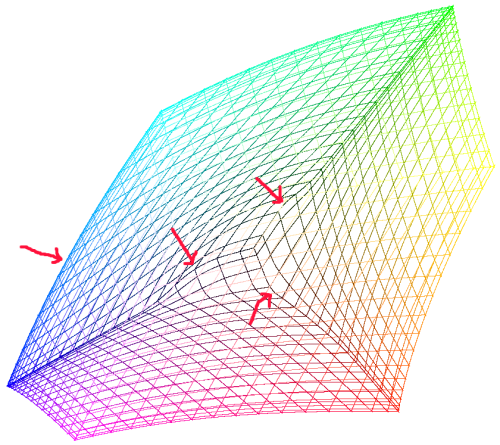This is an idea I came up with when I was working on Argulator. Making websites like this involves a lot of very fiddly work - keeping the server-side and client-side bits synchronized, implementing login/logout stuff and so on. It would be great if there was a site (a "MetaSite" if you will) that let you create data-driven web applications whilst writing a minimal amount of code - sort of like how WordPress lets you make a blog whilst writing a minimal amount of HTML and CSS.
MetaSite would have, built in, the ability to create user accounts, login, logout, change password and so on. The users thus created can then create their own sites and interact with sites built by others. Some sites might require email verification and/or a captcha solve before they will allow the user to do certain things - MetaSite would take responsibility for that and once these tasks are done they don't need to be redone for each application.
There would be an "admin hierarchy" in that an admin of a site can appoint other users as admins with special powers (moderation and so on) who can then further delegate their powers. Upon withdrawing power from an admin, that power is then withdrawn from the closure of admins they've delegated to.
Users would be given tools to allow them to specify which sites can access the information stored by which other sites. One such "built in" site might be a repository of personal information.
Another useful "built in" site would be messaging - a virtual inbox which sites can use to notify their users when events of interest happen.
Yet another useful "built in" would be a shopping cart application which lets applications act as online shops. So if you've written a site and you decide to add a feature which you want to charge users for, it's as simple as just ticking a box. Since payment is centralized with MetaSite, it would be possible to do micropayments (making a single credit card charge to buy "tokens" which can be spent on any MetaSite site).
So far, nothing too unusual - most of this has already been done. Where MetaSite really comes into its own is its rapid application development tools. If you want to create a blogging service, a photo hosting service, an Argulator clone, a wiki or whatever else, it's just a matter of defining what the "objects" that are stored in your system are and how users can interact with them. MetaSite would have various widgets built in so if you define one field to be a date and say that users can edit this date, all the code for a calendar control widget would be automatically instantiated. All the defaults would be secure, reasonably attractive and AJAXified so that the site is nice to use. When developers do need to resort to code it would be written in a sandboxed language (not just uploading raw PHP to the site, that would be a security nightmare). This language would have instrinsics which abstract out all the web-specific stuff and allow developers to just concentrate on their application domain.
This is the big difference between MetaSite and Facebook - if you want to create a Facebook application you need to have your own web server and you need to write the server-side code to run on it. MetaSite would have a very shallow learning curve - making a new site should be as easy as starting a blog.
Metasite applications would be limited in the amount of storage space and CPU time they can use, so that they don't adversely affect other sites. One way Metasite could make money would be to sell extra CPU time and storage space to sites that need it. MetaSite could also make it easy for site admins to add advertising to their sites to monetize them and/or pay for such extras. Another value added feature might be the ability to run a MetaSite site with a custom domain name, or even on your own server.
Everything on MetaSite would be customizable - objects, data editing widgets, even entire applications. In fact, the usual way of creating one of these would be to take an existing thing that's similar to the thing that you're trying to make, and modify it. These modifications could then be available to authors of other sites as starting points for their own things (in fact, I think this should be the default and the ability to keep your customizations proprietary should be a "value added" feature).
Ideally it would be the first stop for any web startup trying to get their site up and running as quickly as possible, but if nothing else it would be a way to take advantage of all those "I need a facebook clone and will pay up to $100" projects on vWorker (nee RentaCoder).
I've gone so far as to register MetaSite.org but I haven't done anything with it yet.
